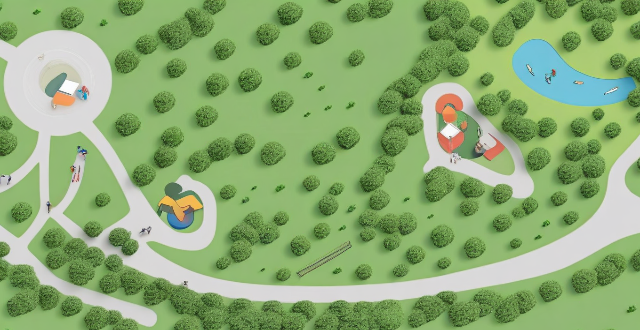Public health policies significantly influence the design and accessibility of parks, aiming to promote physical activity, reduce sedentary behavior, and improve overall health outcomes. Key strategies include promoting walking paths, cycling lanes, fitness equipment, sports facilities, natural landscapes, outdoor seating, interactive features, stress reduction, social interaction, environmental benefits, accessible pathways, ramps, braille signage, and inclusive play areas. These policies contribute to creating parks that support the well-being of individuals and communities alike.

Public Health Policies and Their Impact on Park Design and Accessibility
Public health policies play a significant role in shaping the design and accessibility of parks and recreational facilities. These policies aim to promote physical activity, reduce sedentary behavior, and improve overall health outcomes for the population. In this article, we will explore how public health policies influence the design and accessibility of parks and recreational facilities.
1. Promotion of Physical Activity
One of the primary objectives of public health policies is to encourage people to engage in regular physical activity. This has led to the development of guidelines and recommendations for park design that prioritize features that promote physical activity. Some examples include:
- Walking paths: Parks are designed with clear and well-maintained walking paths that encourage people to walk or jog.
- Cycling lanes: Many parks now have dedicated cycling lanes that allow people to ride their bikes safely within the park.
- Fitness equipment: Outdoor fitness stations equipped with various exercise machines are becoming increasingly common in parks.
- Sports fields and courts: Facilities for team sports such as soccer, basketball, and tennis are often included in park designs to promote physical activity among youth and adults.
2. Reduction of Sedentary Behavior
Public health policies also aim to reduce sedentary behavior, which is linked to numerous health issues such as obesity, heart disease, and diabetes. To achieve this goal, parks are designed to provide opportunities for people to spend time outdoors and engage in activities other than sitting. Some strategies include:
- Natural landscapes: Parks often incorporate natural elements like trees, flowers, and water bodies to create a relaxing environment that encourages people to spend time outdoors.
- Outdoor seating areas: Benches, picnic tables, and other seating options are placed throughout parks to provide comfortable places for people to sit and enjoy the outdoors.
- Interactive features: Features like playgrounds, splash pads, and outdoor art installations attract families and children, encouraging them to spend more time outside rather than indoors.
3. Improvement of Health Outcomes
Public health policies strive to improve overall health outcomes by promoting healthy behaviors and reducing risk factors for chronic diseases. Park design plays a crucial role in achieving these goals by providing spaces for physical activity, stress relief, and social interaction. Some ways in which park design contributes to improved health outcomes include:
- Stress reduction: Natural environments in parks help reduce stress levels by providing a calming atmosphere where people can relax and rejuvenate.
- Social interaction: Parks serve as community hubs where people can gather, socialize, and form connections with others, leading to improved mental health and well-being.
- Environmental benefits: Parks contribute to cleaner air and reduced urban heat island effects, which can have positive impacts on respiratory health and overall well-being.
4. Accessibility for All
Public health policies emphasize the importance of making parks and recreational facilities accessible to everyone, regardless of age, ability, or socioeconomic status. This has led to the following considerations in park design:
- Accessible pathways: Parks are designed with wide, flat pathways that can accommodate wheelchairs, strollers, and other mobility aids.
- Ramps and elevators: Where necessary, ramps and elevators are installed to provide access to different levels within the park.
- Braille signage: Signs in parks often include braille lettering to assist visually impaired visitors in navigating the space.
- Inclusive play areas: Playgrounds and recreational areas are designed to be inclusive, allowing children of all abilities to play together safely.
In conclusion, public health policies significantly influence the design and accessibility of parks and recreational facilities. By promoting physical activity, reducing sedentary behavior, improving health outcomes, and ensuring accessibility for all, these policies contribute to creating parks that support the well-being of individuals and communities alike.